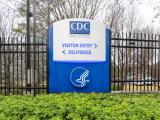Aug 30, 2012 (CIDRAP News) – More parents obtain medical vaccination exemptions for their kindergarten children in states where they are easier to get, which potentially reduces herd immunity and poses a threat to children who have real medical contraindications to vaccination, according to a study published yesterday in the Journal of Infectious Diseases.
Researchers from Emory University found that the overall number of medical exemptions was relatively low over a 7-year period, but the rate of exemptions was more than six times higher in states with "easy" medical exemption criteria than in those with "difficult" criteria.
The researchers examined medical exemption requirements and studied numbers and rates of exemptions in all 50 states for the seven school years from 2004-05 through 2010-11. They say their study is the first to look at the relationship between medical exemption rules and numbers of exemptions.
The authors rated the medical exemption criteria as difficult in only three states: Arkansas, New Mexico, and Wyoming. The criteria were rated as medium in 17 states and easy in 30 states. In addition, they found that 5 states offered only temporary medical exemptions, while 38 states offered a combination of permanent and temporary exemptions, and 7 offered only permanent exemptions.
The nationwide rate of medical exemptions ranged from a low of 263 per 100,000 children (0.26%) in 2006-07 to a high of 411 per 100,000 (0.41%) in 2008-09, the report says. The national total of exemptions increased from 11,277 in 2004-05 to 13,952 in 2010-11. The total number of exemptions for kindergartners over the 7 years came to 87,631.
The rates of medical exemptions in states with easy or medium criteria were significantly higher than in those with difficult criteria, the researchers found. For "easy" states, the incidence rate ratio (IRR) was 6.4 (95% confidence interval [CI], 2.7–15.6); for "medium" states, it was 4.4 (95% CI, 1.8–11.1).
Also, there was some evidence of higher exemption rates in states that offered only permanent exemptions or combinations of permanent and temporary exemptions, compared with those that offered temporary exemptions only. The adjusted IRR for states with permanent exemptions only was 2.0 (95% CI, 0.7–5.5); for those with a combination, it was 2.5 (95% CI, 1.4–4.4).
Although medical exemption rates are low, other studies show they surpass 1% of kindergarten children in some states, the researchers say. They add that medical exemptions "add to existing pockets of susceptibility [to vaccine-preventable diseases] due to nonmedical exemptions to immunization," because "immunization exemptors cluster geographically, increasing the possibility for local areas of increased disease incidence."
In a press release from the Infectious Diseases Society of America, senior author Saad B. Omer, MMBS, MPH, PhD, commented, "The appropriate use of medical exemptions is important to maintaining sufficient herd immunity to protect those who should not be vaccinated due to medical contraindications. Medical providers, parents, school officials, and state health officials are responsible for ensuring that medical exemptions are actually medically indicated."
The researchers also say they found hints of a link between medical exemptions and the difficulty of getting nonmedical exemptions. Medical exemptions were more numerous in states that had difficult or medium rules for nonmedical exemptions (380.5 and 364.3 per 100,000, respectively) than in states with easy nonmedical exemption rules (221.3 per 100,000).
"The highest rate of medical exemptions was found in states with difficult nonmedical exemption criteria and easy medical exemption criteria," which suggests that parents seek medical exemptions when nonmedical ones are hard to obtain, the authors say.
"Our findings suggest that administrative requirements requiring accountability of the physician and parent(s) for granting medical exemptions can be effective in ensuring they are used when there are valid contraindications, and not just as a replacement for nonmedical exemptions," they add.
In an accompanying editorial, two commentators from the Johns Hopkins Bloomberg School of Public Health say the suggestion of a link between strict nonmedical exemption rules and increased medical exemptions is consistent with their unpublished observation that many of the reasons parents reported as medical exemptions for vaccines were not consistent with recommendations from the federal Advisory Committee on Immunization Practices.
The commentators, Daniel A. Salmon, PhD, MPH, and Neal A. Halsey, MD, add, "Granting medical exemptions for invalid medical contraindications may promote unfounded vaccine safety concerns. Although states may wish to allow parents who make decisions based on poor science or perceptions to withhold vaccines from their children, these exemptions should be distinguished from valid medical exemptions."
Stadlin S, Bednarczyk RA, Omer SB. Medical exemptions to school immunization requirements in the United States—association of state policies with medical exemption rates (2004-2011). J Infect Dis 2012 (published online Aug 29) [Full text]
Salmon DA, Halsey NA. Keeping the M in medical exemptions: protecting our most vulnerable children. J Infect Dis 2012 (published online Aug 29) [Full text]
See also:
Aug 30 IDSA press release


















